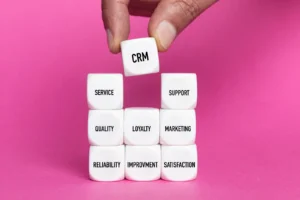As a financial advisor, you know that your team is made up of various roles, each with unique responsibilities and skill sets. From lead advisors to assistants, each person plays an integral role in the success of your firm. However, as your client base grows, it can be challenging to manage all the moving parts of your business effectively. That’s where a customer relationship management (CRM) system comes in. By aligning your CRM with the roles on your team, you can streamline your processes and ensure that everyone is working efficiently towards a common goal.
Why Should I Align my CRM system with the Roles on My Team?
A CRM system is designed to help you manage your client relationships more effectively. However, to get the most out of your CRM, it’s essential to customize it to fit the specific needs of your team. Here are three reasons to build out CRM with roles in mind:
- Increase Efficiency: When everyone is using the same system and processes, you can reduce the time spent on manual tasks, like data entry and reporting. This frees up time for more strategic work, like building client relationships and identifying new business opportunities.
- Improve Collaboration: Break down silos within your team by providing a centralized platform for communication and encourage collaboration.
- Provide Better Customer Service: A CRM system can help you to stay organized and responsive to client needs. By aligning your CRM with the roles on your team, you can ensure that each client interaction is handled by the person with the right expertise and knowledge.
How Do I Accomplish an Efficient CRM with Roles in Mind?
Role Examples: Lead Advisors or Firm Owners
Preferred CRM Features Used: Reports
Lead advisors are typically responsible for managing client relationships and driving business growth. However, they may not have as much time to spend in the CRM system as other team members. To ensure that they are getting the most out of the system, you should create customized reports that provide them with the information they need in a concise and actionable format. This can help lead advisors to make more informed decisions and stay on top of client needs.
Role Examples: Operations or Administrative Staff or Junior Advisors
Preferred CRM Features Used: Templates (Note, Activity, Task, Workflows, etc.)
Operations or Administrative Staff or Junior Advisors may be responsible for more day-to-day tasks like scheduling appointments and answering client questions. To help them manage these tasks more efficiently, you can create customized templates that they can use to streamline their workflow. These templates can include email templates for common client inquiries, appointment scheduling templates, and more.
CRM Tip: From administrative access to rights restrictions, you can customize permissions within your CRM depending on team member’s roles.
What Features Should I Use?
Some of the features you can use to customize your CRM system include:
Contact Roles: Some CRM systems, like Wealthbox, allow you to assign specific roles to each contact in your database. This can help you to keep track of who is responsible for what tasks and ensure that each interaction is handled by the person with the right expertise.
Teams: Many CRM systems, like Redtail Technology CRM and Wealthbox CRM, allow you to build teams for specific activities, tasks, workflows or projects. This can help to break down silos within your team and ensure that everyone is working together towards a common goal.
Workflows: Workflows are a series of automated tasks that can be triggered by specific events in your CRM system. Workflows are meant to be any repeated process that you complete over and over again. It adds a wealth of functionality to your CRM and builds in consistency.
Administrative Privileges: In Redtail Technology CRM, administrative privileges allow you to request database backups, manage database users, teams, and lists, and customize membership options. It’s important to restrict this access to those who should have this privilege.
Database User Rights: Administrative Users can restrict rights to certain roles. For example, Redtail Technology CRM allows the following rights to be available to certain roles:
- Change servicing advisors or writing advisors
- Combine records
- Delete notes
- Delete contact records
- Export CSV files
- Export PDF files
Best Practices
- Identify the roles in your firm: Start by identifying the roles of each team member in your firm. Do they need certain access? Is it in the business’s best interest to protect some parts of the system? This will help you determine what features to use and how to assign tasks.
- Identify the features that are best utilized by each role: Once you have identified the roles, select the features that are best suited for each role. This will help you create a streamlined process for your team.
- Document the CRM responsibilities of each role: Document the CRM responsibilities of each role in an operations manual or a similar document. This will help ensure consistency in your CRM processes and provide a reference for team members.
- Stay on top of the latest updates from your CRM software system: Keep up to date with the latest updates from your CRM software system to see how you can use new features for each role. This will help you stay ahead of the curve and ensure you are using your CRM to its fullest potential. The best way to do this is to sign up for the CRM’s newsletter. Get your entire team subscribed to keep eachother aware of updates and changes.
Aligning your CRM with roles on your team can be a challenging task, however with the right expertise and guidance, it can be achieved. This is where Stephanie Dannebaum Consulting comes in. With years of experience working with financial advisors and their teams, Stephanie and her team knows all the tips, tricks, and best practices to implement a CRM system tailored to your team’s roles and responsibilities. Don’t let the overwhelming responsibility of figuring this out take away from your day-to-day operations. Trust in Stephanie Dannebaum Consulting to provide you with the solutions you need for efficient and effective customer relationship management.




